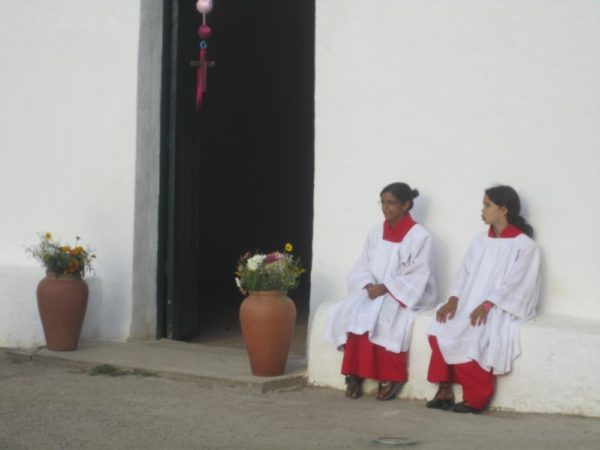The Accidental Local
First published EnRoute Magazine
We’ve been motoring seaward for about an hour when Roberto finally cuts the diesel. Brazil is a bare pencil line on the horizon, Monte Pascoal a tiny bump, as it must have been when Portuguese explorers first came across these cobalt blue waters 500 years ago, and I’m feeling more here than I have since arriving. Roberto yells at his mate, Uruca, to drop the anchor. Then we wait as the hook sets in the rock far below. With a flash of a smile, Roberto indicates that it’s time to fish.
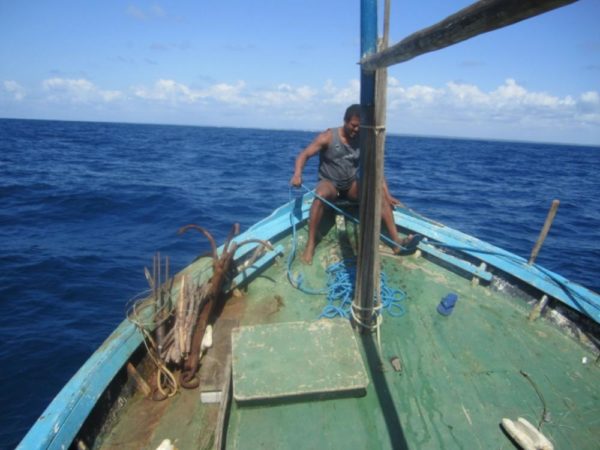
We use strictly traditional techniques as those are the rules in this part of Bahia, even for visitors: thrown nets, single lines or spears with no scuba. We choose lines, and down they go: high-test fishing wire unwound off Styrofoam spools, hooks baited with bits of white fish that Uruca produces from a cooler. And up come, in what seems like mere seconds, the struggling ariocó, big red-flanked fish with yellow stripes. No Portuguese required for this moment; fishing is its own common language. “Olá! Look at this!” I shout. Roberto ribs Uruca, pointing at me, and says something like “He’s catching more than you! Maybe I’ll hire him!”
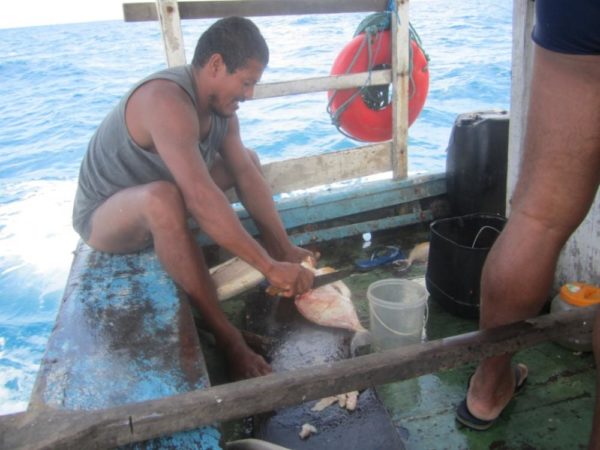
The idea isn’t so far-fetched: Trancoso is famous for swallowing foreigners alive. Since the local population – Pataxó aboriginals, Portuguese settlers and African slaves – first mingled in this seaside town in northeastern Brazil, a steady stream of outsiders like me have come to visit, and many never left, becoming immersed in the landscape almost instantly.
Back on land, Roberto and Uruca sell their catch on the beach in minutes. I bring mine to the Uxua Casa Hotel, where chef Bernardo shows me how to cook the fish in two classic Bahian styles: first steamed in banana leaves with olives and black rice, simple and clean flavours; then in a fabulous moqueca, which Bernardo insists I help him make. He guides me through the various steps, sautéing the onions and garlic and peppers, then bringing the fish to a boil in coconut milk in a clay pot, to be served bubbling at the table. Bahian perfection as the sound of a weekend-long soccer match drifts in and the pink-tinged clouds float seaward overhead.
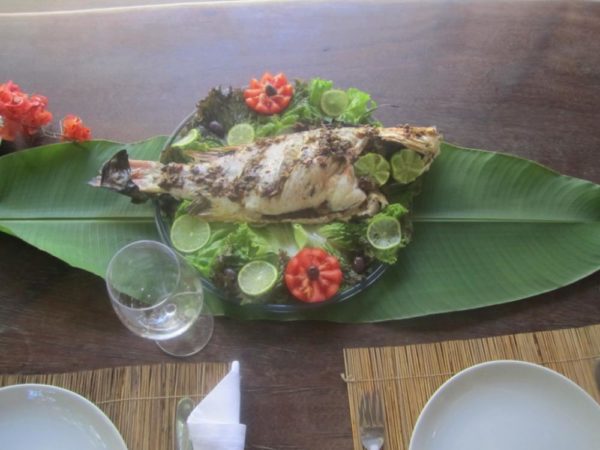
On the grassy central Quadrado in front of Uxua, a cluster of old-timers sits with instruments in circled chairs under the shifting leaves of the amendoeira tree. Red and blue lights wink, and people clap and sing along while the stars swirl overhead. To hear samba in its birthplace is so perfect, I wonder briefly if the Uxua concierges, who seem to know everyone in the region as personal friends, arranged for it. (They didn’t.) The scene is just Trancoso doing what Trancoso does, in this case celebrating the life of a beloved local, a midwife they called Dona da Glória, who passed away a month before. And so we stand, swaying with the sweetly wistful music, sipping glasses of potent batida handed to us by a smiling woman in colourful beads and flowing skirt. And the distance between this moment and regular city life spools out into the night with song and drink and laughter.
The next morning, Romualdo, a baiano who runs canoe trips down the Rio Trancoso, shows us Bahia from the water. He drives us up craggy clay roads into the singing jungle so we can float downstream. It’s a voyage from the town’s private to its public face as we make our way past residences toward the beach. The dark green waters swirl under hanging vines; low-flying birds race overhead through clouds of mutuca mosquitos as big as your thumb. No dengue or yellow fever, Romualdo assures us. But the mutuca can bite through the hide of a donkey, so we slap on bug spray all the same.
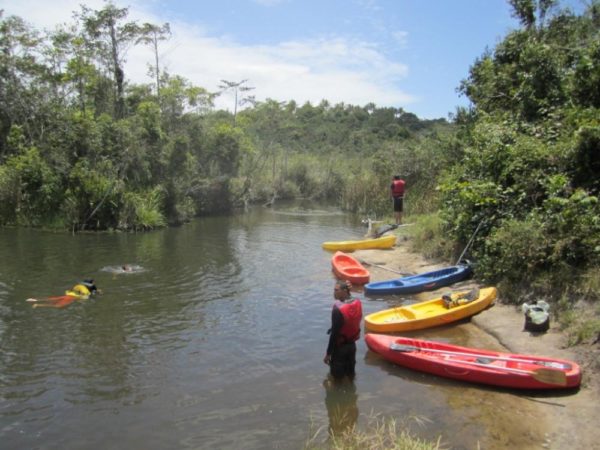
Down the snaking, close passage of water, we glimpse into Trancoso’s backyard. Kids paddle in the elbows of the river next to leaning docks and brightly painted fishing boats. A man snorkels with a spear in search of the robalo fish among the mangrove roots. This is Bahian life in its natural rhythms. As we near the ocean, Romualdo describes how in decades past, it wasn’t unheard of for a lingering foreigner to receive land from locals through trade, although usually it was along the beach, which wasn’t as highly prized as land on the riverfront, with its access to fish and transportation. He says this as we glide past a magnificent gameleira tree, soaring to the forest canopy, braided around by seedling offspring that will eventually consume and replace the original trunk.
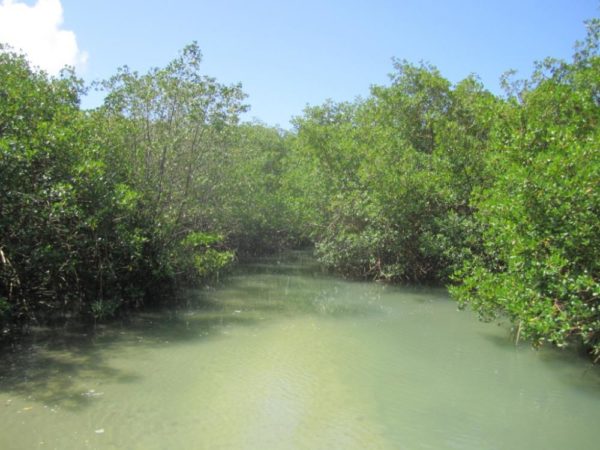
Then we’re out of the bush and into the final stretch of river before the beach, separated from the ocean by only a single orange sand dune. The river water is turquoise here, where the locals swim. Two boys do cartwheels across the grass, vaulting into the water in a tangle, a foaming eight-limbed river monster with two mouths laughing.
Someone across the Quadrado is holding a communal Saturday meal, and we’re invited. That’s how we learn about feijoada: a 24-hour stew of black beans, pork shin and salt beef, served over rice with farofa and couve and yet more batida to sip. We sit on the concrete floor of the casa festiva with families savouring a delicious moment. And when a pregnant dog wanders in and finds herself a half-finished plate on a low table and digs in, nobody looks twice. We were welcomed; so is she.
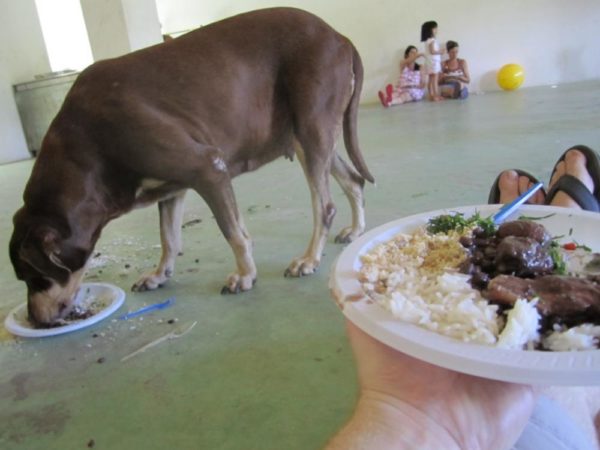
Chatting with locals comes naturally in Bahia, whether it be with men burning leaves in the square, a schoolteacher or an 86-year-old woman named Gida, who leans out her front window to offer us cajú fruit. We find shade at a café and sip foamy white cacao juice, watching a huddle of people drinking beer under a sign that reads “Ponto dos Mentirosos” (liars’ place). Gilberto Gil trickles from overhead speakers – his famous song “Toda Menina Baiana” about how all baiana girls have charm and spirit. There’s a certain way he sings, with a smile you can hear. Meanwhile, the men throw their nets in the river, and the wind applauds.
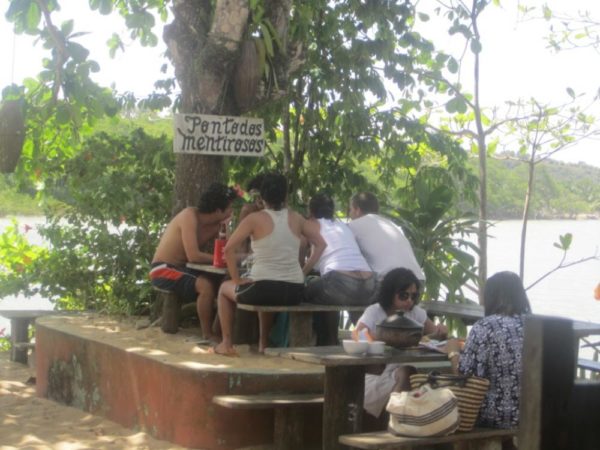
Samba closes our visit, as it surely should, this being its home. I’ll always remember the dark knot of people under the tree, the sway of bodies and the mingling of conversation and song. One song about taking the last train from São Paulo. And another where the haunting refrain is “Não Deixe O Samba Morrer.” Don’t let the samba die. The people were made of samba, the famous song says. Don’t let it die. And listening in the Trancoso Quadrado, that moon still very much on its rise, I’m embraced by the scents and rhythms of the essential Bahia, feeling glad to have been shown it so intimately, and quite confident that it will survive.
